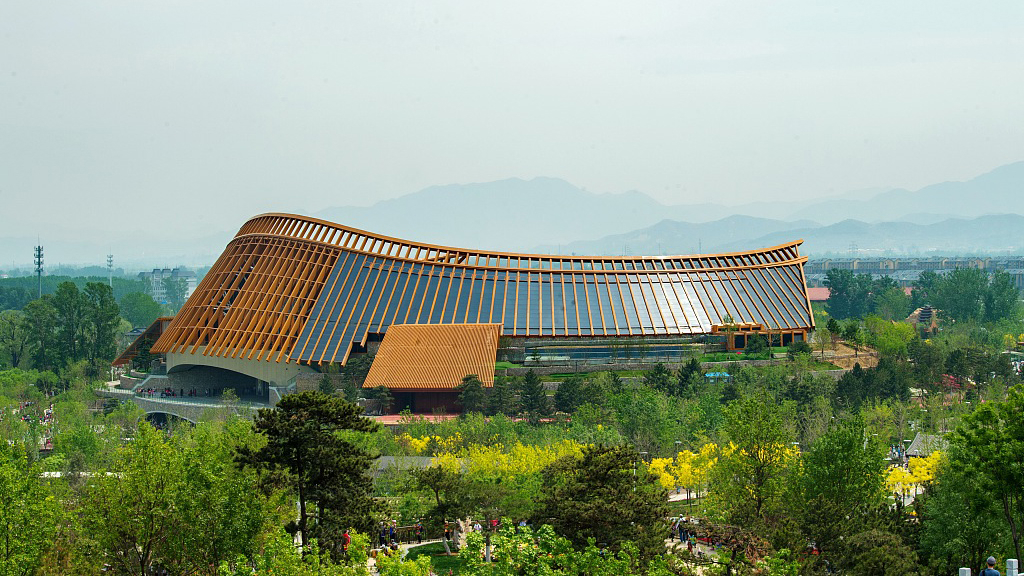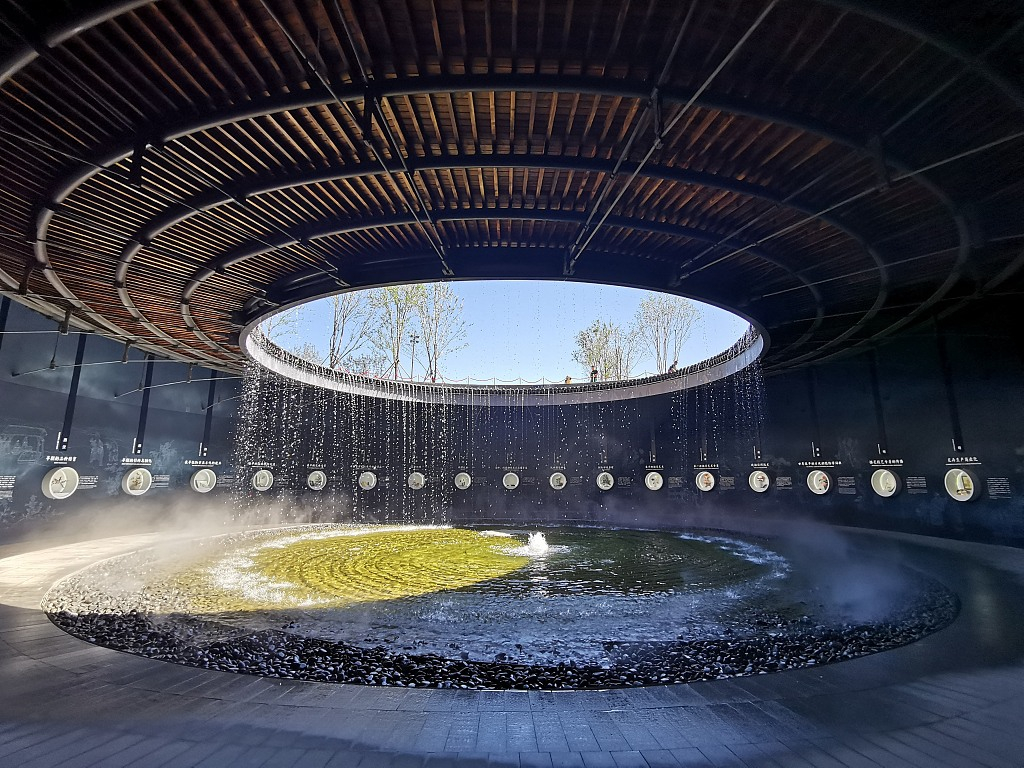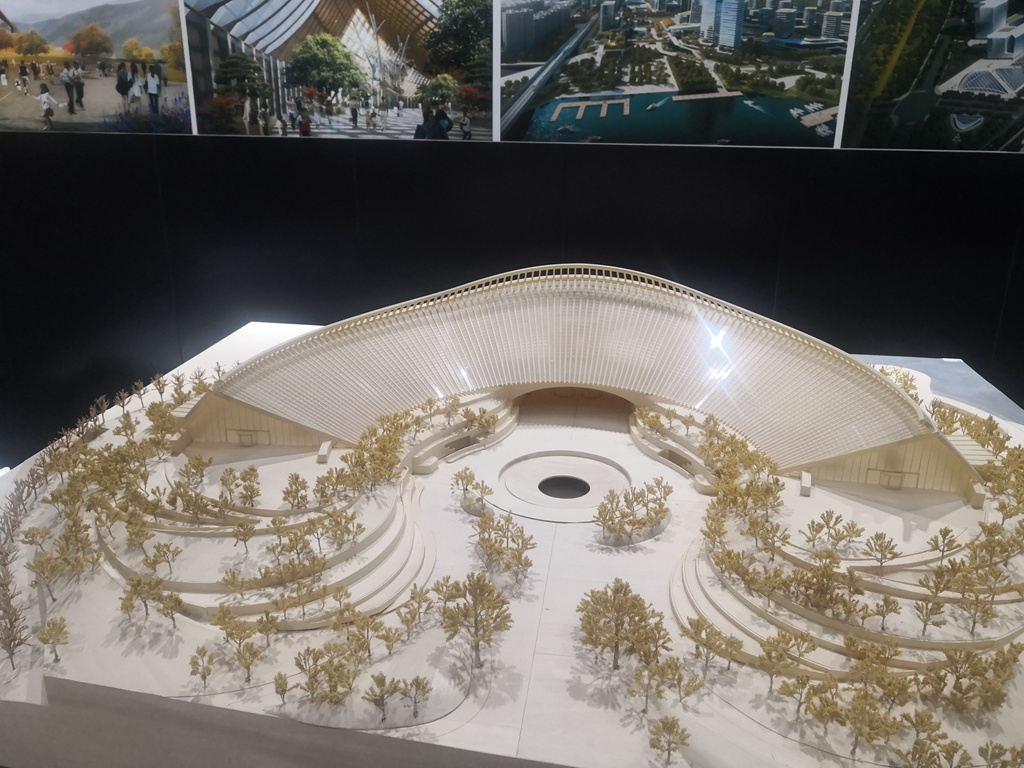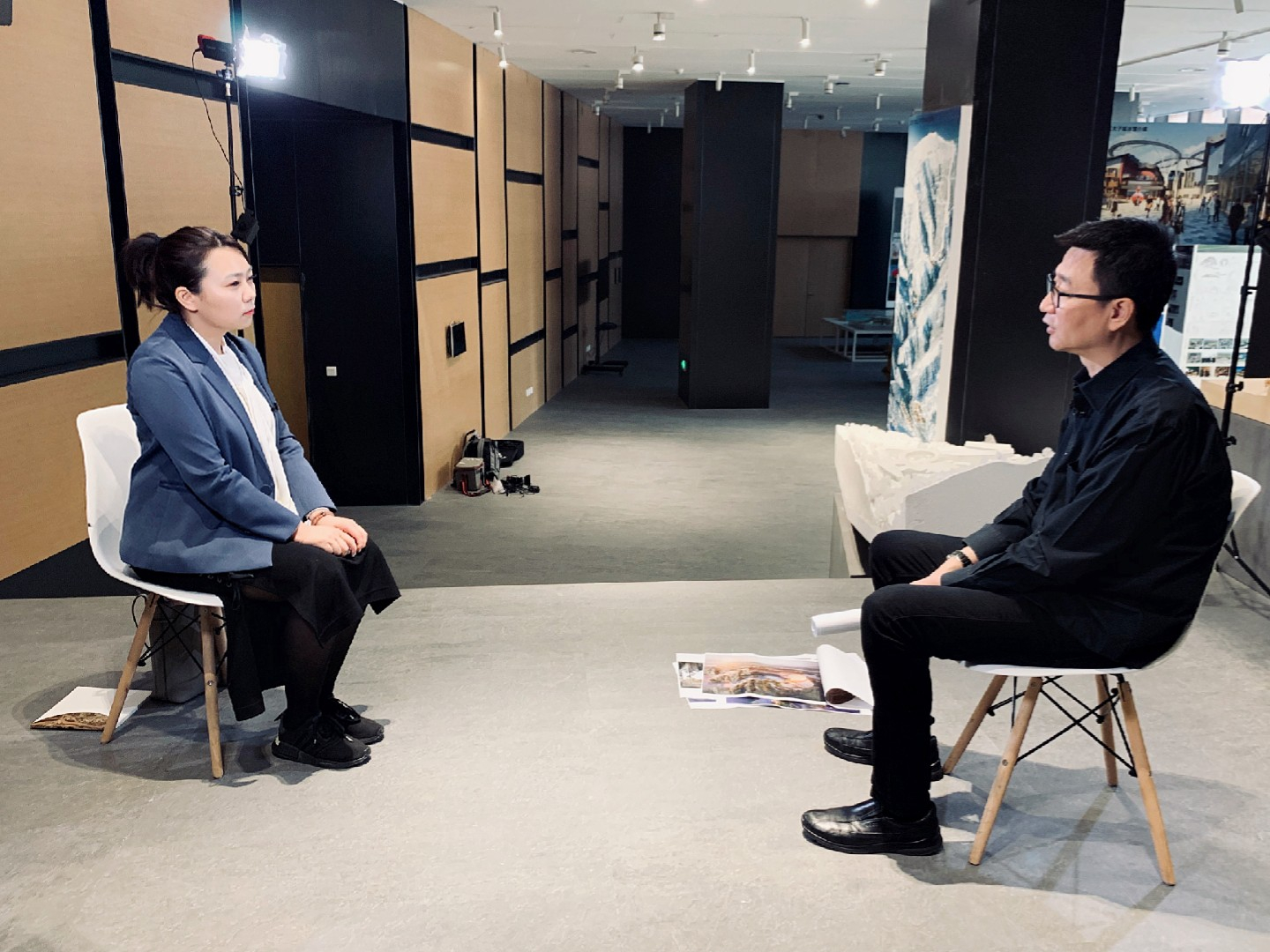
Culture
21:45, 06-Jun-2019
Designers share behind-the-scene stories of China Pavilion
Updated
21:56, 06-Jun-2019
By Wang Mengzhen, Li Da, Liu Zihao
02:46

Many people who have seen the China Pavilion at the ongoing 2019 Beijing International Horticultural Expo call it a combination of ancient Chinese wisdom and green technology innovation.
Architects spent almost five years, from research to design and then final construction, in creating the pavilion. The process was faced by several challenges and major changes through out the journey.
Jing Quan from the China Architecture Design Group, one of the chief designers of the China Pavilion, shared some behind-the-scene stories with CGTN.

China Pavilion at the Beijing International Horticulture Expo, Beijing. /VCG Photo
China Pavilion at the Beijing International Horticulture Expo, Beijing. /VCG Photo
"Originally we wanted to design the pavilion in a circular shape like this. Then we changed that to this semi-circular building, to better include the natural surroundings," said Jing, calling it a bold decision since it was made just days before the final bid submission in 2015.
"It's also in the shape of the ancient Chinese ornament called ruyi, symbol of good luck," the designer said. "Nestling the local mountains and the Guihe River, the design shows its openness and welcomes visitors from around the world."
Many elements of ancient Chinese wisdom have been incorporated into the designing of the pavilion. By doing so the designers hoped that the architecture would present global visitors with the Chinese traditional cultures within the country's long history.

A model of the China Pavilion for 2019 Beijing International Horticultural Expo on display at China Architecture Design Group in Beijing. /CGTN Photo
A model of the China Pavilion for 2019 Beijing International Horticultural Expo on display at China Architecture Design Group in Beijing. /CGTN Photo
"In the earliest collection of Chinese verses, namely the 'Book of Songs,' one poem describes the eaves of ancient architecture stretching gracefully like a bird's wings. That's exactly where we got the inspiration from when designing the pavilion's curved roof," Jing revealed.
"Through the whole design of a farmhouse with terraced fields and a courtyard surrounded by mountains and rivers, we wanted to create a picturesque countryside view and an authentic farm life thanks to China's long history of agricultural civilization. Farming is deeply rooted in Chinese gardening, and that's the wisdom China would like to convey to the world," he added.
Apart from traditional philosophies, green technology is another highlight of the design.

Jing Quan (R), one of the chief designers of the China Pavilion at the 2019 International Horticultural Expo, in an interview with CGTN in Beijing. /CGTN Photo
Jing Quan (R), one of the chief designers of the China Pavilion at the 2019 International Horticultural Expo, in an interview with CGTN in Beijing. /CGTN Photo
"The prototype of the China Pavilion is a huge green house. Through the special material on the roof, solar energy is collected to generate power for the pavilion. And with a rainfall collection and storage system, processed rainwater can be used to irrigate the terraced fields nearby," said Jing while revealing the "green secrets" behind the designing.
"Another unique setting is that we've made the best underground air conditioning tunnels which are easily found in residences of northern China to lower the pavilion's energy consumption," he added.
"Throughout the 40 years of reform and opening-up, we have gradually realized that our ancient farming and nature have much more to offer, that's why our team and fellow Chinese architects should dig deep in the future."

SITEMAP
Copyright © 2018 CGTN. Beijing ICP prepared NO.16065310-3
Copyright © 2018 CGTN. Beijing ICP prepared NO.16065310-3